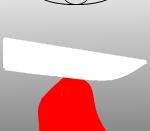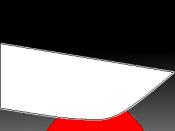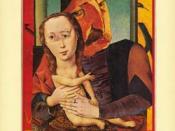Topic Question: What understandings of the issue of gender and power are gained from characterization of men and women constructed in the text studied?The notion of power is a fundamental building block of any ancient, modern or futuristic society. The Handmaid's Tale by Margaret Atwood is an example of the distribution of power across a futuristic society, specifically a patriarchal dystopia. The power which women hold in this society is minimal compared to that held by men, but this is not an unquestionable reality. The issue of gender and power and highly subjective by nature and throughout this novel this fact is emphasized and the topics interrelated. Women demonstrate this power with their possession and use of language, sexuality, choice and even the exertion of their own autonomy. Men within this society also experience repression and disempowerment. Their struggle is centered on the absence of emotional needs, along with sexual tensions being relieved for pleasure rather than reproduction.
Atwood creates these power struggles through the characterization of both men and women within the text.
In terms of female characterization, Offred is an elementary character. Being a first person narrator, she offers incredible insight into the world which Atwood has created and her reactions to it, and thus her own means of power. The way in which language is used shapes this insight incredibly and demonstrates how she can gain control. The Republic of Gilead imposes strict censorship on language, ranging from forbidding all women except Aunts to read. "⦠decided that even the names of shops were too much temptation for us. Now places are known by their signs alone." [p35] to intertwining biblical rhetoric into everyday language. "â¦a whirlwind; better than the Chariot, much better than the chunky, practical Behemoth". Gilead even removes the Handmaids names, in this society...


